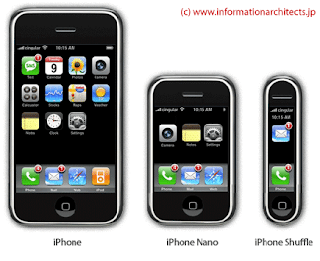
Yesterday at the Stealth Communications
Voice Peering Forum, there was spirited discussion about Google, and on Google's impact on the broader telecom industry. One line of thinking was that Google wasn't as big an issue as sometimes thought, because the one thing it really has succeeded at is advertising. The implication is that Google will not, or cannot, emerge as a force in the mobile or landline parts of the telecom industry.
The other point of view is that Google already has become a factor, even if it is only as a force reshaping all of advertising.
Likewise, some people are going to argue that Verizon Wireless and at&t Wireless announcements about the openness of their networks are essentially "no big deal." Customers already could swap Subscribe Information Modules" in at&t and T-Mobile phones because both carriers use GSM, and that's just a feature of a GSM network.
That misses the point. The entire U.S. wireless industry now has formally and publicly embraced the notion of open networks. There won't now be any retreat from that position, as end users increasingly will expect it, as every consumer expects such openness in Europe.
And though it sometimes seems as though all essential regulatory debates have ended in the U.S. market, the converse is true. In large part because of what now is happening in Europe, policymakers ultimately are going to have to reexamine the basic national framework for telecom regulation in the U.S. market.
The argument that a capital strike is inevitable in any "functional separation" regime, or a "structural separation" regime, does not seem to be borne out in the European markets. Carriers might not like the framework, as it is helpful to competitors. But dire consequences: a capital strike that cripples robust broadband access deployment, does not seem to be occurring in Europe, where such a strike might have happened.
That is not an endorsement of "anti-telco" restrictions. What is required is some encouraging, stable policy that provides clear incentives for rapid, aggressive optical access investment on the part of the leading U.S. telcos, and assures their investors that a predictable return is possible. "Structural" or "functional" separation essentially can "guarantee" a carrier that most wired broadband traffic (other than cable's) will flow over the carrier's owned pipes.
In essence, regulators can ensure that nearly 100 percent of broadband access traffic. other that that provided by cable operators, flows over the incumbent wired telecom network. Granted, the U.S. and European markets are diverging. Cable is a big factor in the U.S. market and is driving measurable and effective competition to a large extent.
The issue is whether some sort of separation can be crafted that actually creates a better investment climate for incumbent optical access facilities. That isn't the way separation traditionally has been viewed. But circumstances might be changing. A company whose "reason for living" is the "best possible optical access", serving virtually every potential retail competitor, with reasonable assurances of a return on investment, might be worth looking at.
The analysis will not be easy. Cable is a huge "fact on the ground". It might be too late to create a regime where all retail services flow over one huge physical access network. Also, cable operators historically have resisted giving up their networks. But there's a cost to upgrading those networks, and the financial markets never like it when cablers have to invest heavily in those networks.
But even large global carriers are discovering that spending more of their dear capital on transport facilities might not be the best way to proceed. It might seem improbable at the moment that such a fundamental new debate is possible. But give matters a couple of years. Demand for access bandwidth is going to explode. Carriers, with the exception of Verizon, will need to respond.
Financial markets will need reassurance. Maybe the current regime continues to work. But maybe it doesn't. Watch the European markets. If bandwidth demand continues to explode, and European end users start to routinely receive much more bandwidth than U.S. consumers do, there will be an inevitable demand for doing something in the U.S. market.






